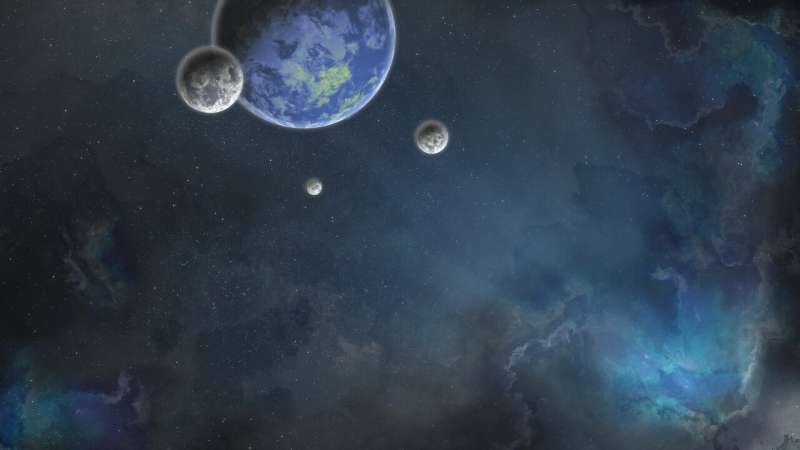Credit: Pixabay/CC0 Public Domain
Help NASA find exoplanets, worlds beyond our solar system, through a newly launched website called Planet Patrol. This citizen science platform allows members of the public to collaborate with professional astronomers as they sort through a stockpile of star-studded images collected by NASA's Transiting Exoplanet Survey Satellite (TESS).
"Automated methods of processing TESS data sometimes fail to catch imposters that look like exoplanets," said project leader Veselin Kostov, a research scientist at NASA's Goddard Space Flight Center in Greenbelt, Maryland, and the SETI Institute in Mountain View, California. "The human eye is extremely good at spotting such imposters, and we need citizen scientists to help us distinguish between the look-alikes and genuine planets."
Volunteers will help determine which TESS snapshots include signals from potential planets and which ones show planet impersonators.
TESS uses its four cameras to take full images of one patch of sky, called a sector, every 10 minutes for a month at a time. This long stare allows TESS to see when planets pass in front of their stars, or transit, and dim their light. Over the course of a year, TESS collects hundreds of thousands of snapshots, each containing thousands of possible planets—too many for scientists to examine without help.
Computers are very good at analyzing such data sets, but they're not perfect, Kostov said. Even the most carefully crafted algorithms can fail when the signal from a planet is weak. Some of the most interesting exoplanets, like small worlds with long orbits, can be especially challenging. Planet Patrol volunteers will help discover such worlds and will contribute to scientists' understanding of how planetary systems form and evolve throughout the universe.
Want to hunt the skies for uncharted worlds from home? Join Planet Patrol! Watch to learn how you can collaborate with professional astronomers and analyze images from NASA’s Transiting Exoplanet Survey Satellite (TESS) on your own. You’ll answer questions about each TESS image and help scientists figure out if they contain signals from new worlds or planetary imposters. Credit: NASA’s Goddard Space Flight Center/Conceptual Image Lab
Planets aren't the only source of changes in starlight, though. Some stars naturally change brightness over time, for example. In other cases, a star could actually be an eclipsing binary, where two orbiting stars alternately transit or eclipse each other. Or there may be an eclipsing binary in the background that creates the illusion of a planet transiting a target star. Instrumental quirks can also cause brightness variations. All these false alarms can trick automated planet-hunting processes.
On the new website, participants will help Kostov and his team sift through TESS images of potential planets by answering a set of questions for each—like whether it contains multiple bright sources or if it resembles stray light rather than light from a star. These questions help the researchers narrow down the list of possible planets for further follow-up study.
Citizen scientists can dive even deeper by learning more about the star in each image and by engaging with the Planet Patrol community.
A Goddard summer intern recently helped discover the TESS mission's first planet orbiting two stars through another citizen science program called Planet Hunters TESS, run by the University of Oxford.
"We're all swimming through the same sea of data, just using different strokes," said Marc Kuchner, the citizen science officer for NASA's Science Mission Directorate. "Planet Hunters TESS asks volunteers to look at light curves, which are graphs of stars' brightness over time. Planet Patrol asks them to look at the TESS image directly, although we plan to also include light curves for those images in the future."
Provided by NASA's Goddard Space Flight Center
























